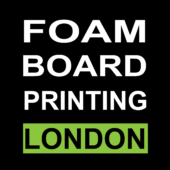Foam board insulation is a popular choice for homeowners and builders looking to improve energy efficiency and reduce heating and cooling costs. This type of insulation offers excellent thermal resistance and can be used in various applications, from walls to ceilings and floors. In this article, we will guide you through the process of attaching foam board insulation, ensuring you achieve a well-insulated home.
Materials Needed
Before beginning your project, gather the following materials:
- Foam board insulation panels
- Construction adhesive or foam board adhesive
- Fasteners (screws or nails)
- Utility knife or insulation saw
- Measuring tape
- Straight edge or carpenter’s square
- Caulk gun
- Caulk (optional)
- Safety goggles
- Dust mask
Step 1: Measure and Cut the Foam Board
Start by measuring the area where you will install the insulation. Use a measuring tape to determine the height and width of the walls or ceilings. Transfer these measurements to the foam board insulation panels. For accurate cuts, use a straight edge or carpenter’s square as a guide. A utility knife or insulation saw works best for cutting foam board; score the panel with the knife and then snap it along the cut line.
Step 2: Prepare the Surface
Ensure that the surface where you will attach the foam board is clean, dry, and free from debris. Remove any loose paint, dust, or old insulation. If installing on walls, consider applying a primer to help the adhesive bond better. For surfaces that are rough or uneven, you may want to consider using a leveling compound before applying insulation.
Step 3: Apply Adhesive
Choose a high-quality construction adhesive or foam board adhesive suitable for the type of foam board you’re using. Apply a continuous bead of adhesive around the perimeter of the foam board panel, about 1 inch in from the edge. For larger panels, add a few additional beads of adhesive in a zigzag pattern across the center of the board. This ensures good coverage and helps the board adhere securely.
Step 4: Position and Attach the Foam Board
Carefully position the foam board insulation against the wall or ceiling. Press firmly to ensure full contact with the adhesive. If necessary, use a level to ensure the panel is straight. Depending on the size and weight of the foam board, you may need assistance to hold it in place while the adhesive sets.
Step 5: Secure with Fasteners
While the adhesive provides initial hold, it’s a good idea to secure the foam board with fasteners for long-term stability. Use screws or nails to attach the foam board to the framing behind the drywall or to the structural components if you’re working in a ceiling or floor application. Space the fasteners about 12 to 16 inches apart around the perimeter of the foam board.
Step 6: Seal the Edges
To enhance the insulation’s effectiveness, seal the edges and joints of the foam board with caulk or foam insulation. This prevents air leaks and increases energy efficiency. Apply caulk around the perimeter where the foam board meets the wall or ceiling and fill any gaps between panels to create a continuous thermal barrier.
Step 7: Finish the Installation
Once all panels are installed and sealed, you can proceed with any additional finishing work, such as covering the foam board with drywall, paneling, or other finishes. This not only improves the aesthetic appeal but also adds a layer of protection to the insulation.
Conclusion
Attaching foam board insulation is a straightforward process that can significantly enhance your home’s energy efficiency. By following these steps, you can ensure a well-insulated space that stays comfortable year-round. Always prioritize safety and use appropriate protective gear while working. With a little effort and the right materials, you can enjoy the benefits of foam board insulation for years to come.
